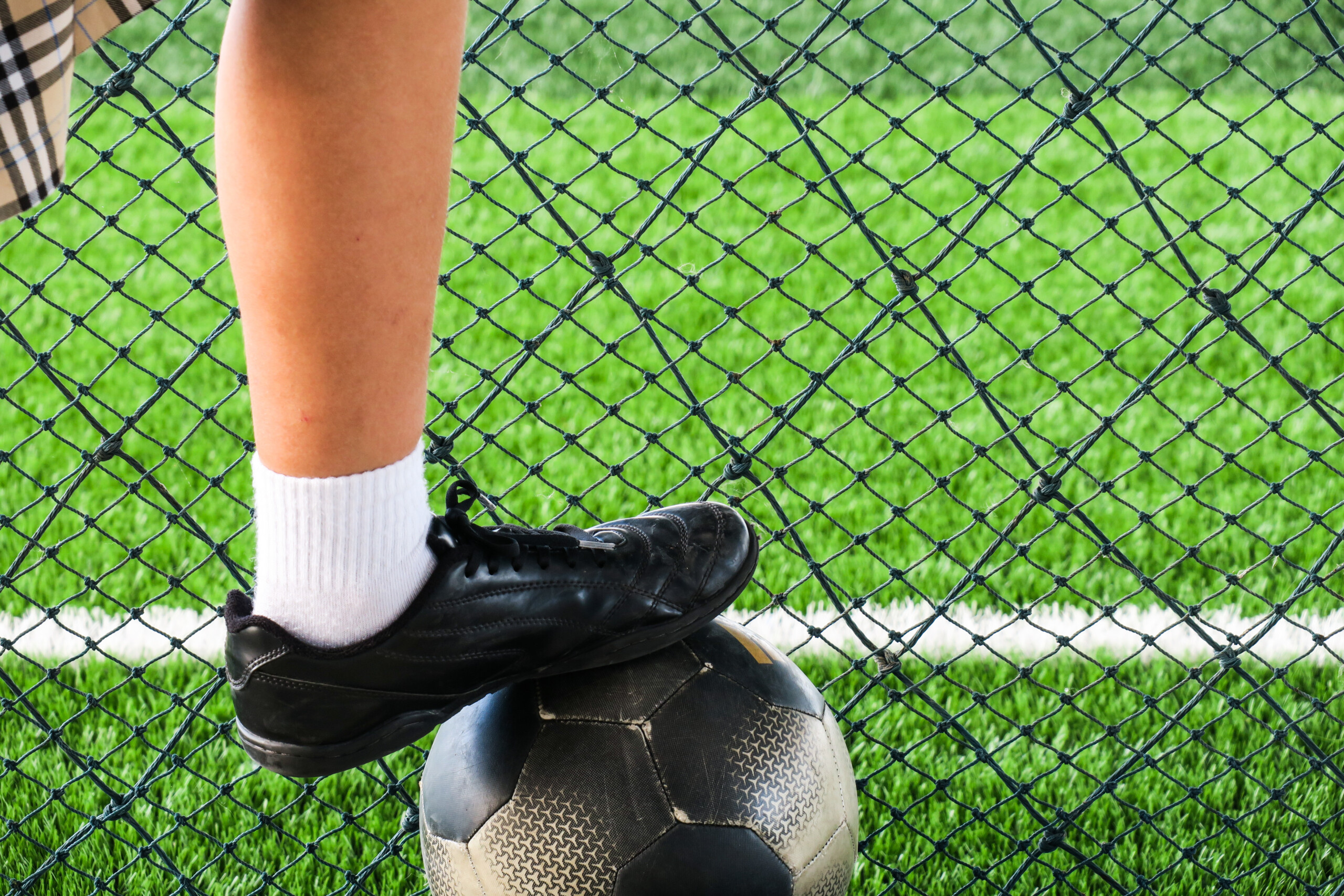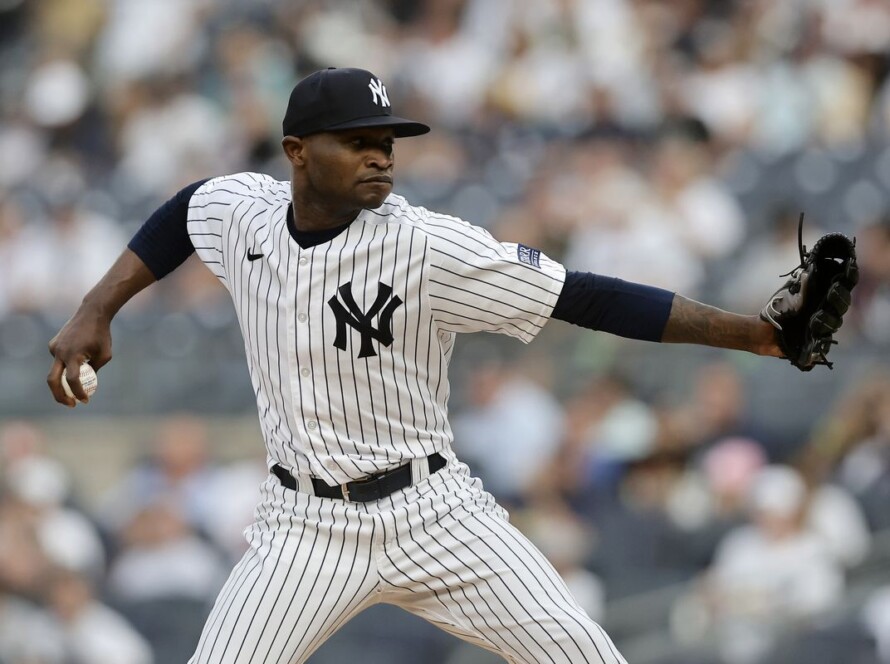Numerous studies have demonstrated that climate change in recent years has affected the sports sector, leading either to changes in competition schedules due to improper weather conditions for physical activities or to decreased athlete performance in highly polluted environments. Additionally, considering both the large number of participants and enthusiasts of mass and high-performance sports, as well as the numerous sports competitions organized globally, nationally, or internationally, the sports phenomenon contributes to 0.3% – 0.4% of the planet’s global emissions.
Global warming represents the greatest challenge of the century in which we live, and the climate changes recorded in recent years have complex consequences on both the environment, society, and the economy, as well as on human health. All these consequences also affect the sports sector, whether we are talking about competition schedules or athlete performance capacity.
Following the commitments of the EU and its member states by signing the Paris Agreement (2015), in November 2021, the United Nations Climate Change Conference – COP26 – took place in Glasgow, a major event that brought together leaders from all countries to agree on solutions to the climate crisis and to establish some of the most advanced legislative frameworks for all sectors. On this occasion, the world’s largest sports organizations, including the International Football Federation (FIFA) and the International Olympic Committee (IOC), committed to adhering to numerous commitments with the common objective of achieving climate neutrality. The common goal set by scientists is for global greenhouse gas emissions, primarily carbon dioxide from coal, oil, and gas burning, to decrease by at least 45% from 2010 levels by 2030 and to achieve net-zero emissions by 2050.
However, to date, the issue of climate change has received relatively little attention in the field of sports science (Schneider& Mücke, 2021), although the threat it poses to this sector is significant, especially for outdoor and winter sports (Orr & Inoue, 2019). To draw attention to the imminent consequences of climate change, an original initiative was included in a study conducted in 2020, proposing a new subdiscipline of sports management called sports ecology. This subdiscipline would have numerous objectives, including raising awareness among university staff about this research field, developing courses aimed at educating current and future sports professionals, formal recognition of the influence and role of the natural environment in sports management, positive influence on the sports industry, and balancing the relationship between sport and the natural environment (Mccullough et al., 2020).

Analyzing the dynamics of two important climate indices (the probability of temperatures below 0°C and the probability of snow depth exceeding 30 cm under conditions of advanced snow production capacity), a group of researchers anticipated the consequences of global warming on outdoor winter sports: of the 19 geographical regions that previously hosted the Winter Olympic Games, only 10 or 11 of them will still be able to offer adequate climatic conditions by 2050, and only 6 by 2080. These climate change forecasts have significant implications for the geography of cities and regions that can still host the Winter Olympic Games (Scott et al., 2015).
Some of the most memorable images of the 2010 Winter Olympics were related to the weather conditions, namely high temperatures that led to snow melting, rain, and mountains covered with vegetation in the middle of winter. Consequently, in the early days of the event, the organizers obtained snow from neighboring areas to ensure the conduct of freestyle skiing and snowboarding competitions in Vancouver (Orr & Inoue, 2019). On the other hand, in Germany, the floods in the summer of 2021 caused damages worth 100 million euros to sports facilities and destroyed the famous Königssee bobsleigh track. This was caused by both global warming and massive deforestation that could have prevented landslides.
Moreover, some major sports events take place in the summer months and often under warm environmental conditions, which have the potential to influence performance and consequently lead to health problems among athletes. The extreme implications of the environment on athletes’ health and performance were well illustrated during the final match, Argentina – Nigeria, at the Beijing 2008 Olympic Games, where the air temperatures on the field reached 42°C (Maughan et al., 2010). In 2014, for example, the Australian Open tennis match was interrupted due to extreme temperatures, after some players complained of nausea or fainting due to the heat. During the FIFA World Cup in Brazil, the game was also interrupted to allow players additional cooling and hydration breaks when the temperature exceeded 39°C (Périard & Racinais, 2015).
The Tokyo Olympics were not without incidents caused by high temperatures and humidity: tennis matches were played starting at 3 p.m. instead of 11 a.m. after several players complained of the suffocating heat at the Ariake Tennis Park. Spanish player Paula Badosa, a victim of heatstroke, left the court in a wheelchair after withdrawing in the quarterfinals match against Marketa Vondrousova (Czech Republic). The marathon and racewalking events at the Tokyo 2020 Olympics were moved to Sapporo, northern Japan, due to climatic issues. Also, the FIFA World Cup, held in Doha, started in November 2022, marking the first edition of the largest inter-country football competition to be played in autumn.
Considering that three of the most important sporting events take place during the summer season, namely the Olympic Games, the FIFA World Cup, and the Tour de France, a group of experts revised and discussed the peculiarities of training and competition in hot conditions. The conference held in 2014 at the Aspetar Hospital for Sports Medicine and Orthopedics in Doha, in collaboration with the Scandinavian Journal of Medicine and Science in Sports, presented significant research regarding the mechanisms of shaping/adapting performance in heat, strategies that can be used to mitigate performance decline, various methods of improving it, as well as recovery procedures after effort. The research also includes specific recommendations for athletes, coaches, and event organizers related to acclimatizing performance to heat, hydration strategies, and cooling techniques (Racinais et al., 2015).


Another study revealed that the ability to perform physical activities begins to decline when the temperature is perceived at values higher than 26°C (Wet-bulb globe temperature – WBGT), while at values higher than 40°C, it is very difficult to engage in any physical activity (Stamatakis et al. 2013). In a laboratory study, the endurance time in an effort test at a power/intensity that could be sustained for 94 minutes at a temperature of 10°C was reduced to 81 minutes when the temperature was increased to 20°C and to 52 minutes when the temperature was increased to 30°C. Thus, the effects of increasing environmental temperature on athletes’ performance can appear even at much lower values (Galloway & Maughan, 1997). However, a recent study shows that although the physical performance capacity of the player is affected in high-temperature environments, technical abilities seem to be preserved and even improved. Consequently, team sports athletes may benefit from a game strategy that prioritizes ball possession over transition-based tactics (Nybo et al., 2020).
Furthermore, climate change will significantly affect the distribution of disease-carrying vectors, so meteorological patterns will affect the transmission and survival of infectious pathogens (Ahdoot & Pacheco, 2015, cited by Morrison et al., 2021). Therefore, the impact of the COVID-19 pandemic on human circulation restrictions is unlikely to be a unique situation (Morrison et al., 2021), and public health specialists have warned since the early days of the pandemic about the negative impact that physical inactivity imposed by isolation will have on all individuals, regardless of age group (Burtscher et al., 2020). Although the circulation restrictions imposed by the Coronavirus pandemic have affected the performance capacity of athletes, they have had a positive impact globally on air quality, leading to reductions in emissions of certain atmospheric pollutants such as nitrogen dioxide (NO2) or an increase in the ozone layer (Torkmahalleh et al., 2021).
Recognized as the most valuable global sports competition, the Olympic Games represent the culmination of the Olympic movement. The large number of participants and the resources invested in organizing them (infrastructure creation, transportation, tourism) demonstrate that sports are not just victims of climate change but also contributors. Based on the provisions of the Olympic Charter, “the goal of the Olympic movement is to contribute to building a peaceful and better world by educating youth through sport practiced in accordance with Olympism and its values” (Olympic Charter, Chapter 1, Rule 1.1). Considering that the conduct of sports competitions is closely linked to the environment (relief forms, weather conditions), the purpose of Olympism must be aligned with the challenges posed by climate change. This responsibility has been included on the agenda of the International Olympic Committee (IOC) since 2010, as shown by a study conducted by Del Fiacco and Orr in 2019. However, recent research shows that out of the 32 International Sports Federations participating in the Summer Olympic Games, most have made very little progress towards the environmental sustainability objectives set by the Olympic Movement, and a very small number of these sports organizations have set their own sustainability goals. Although the contribution of each federation would contribute to the overall impact of the Olympic Movement on the environment, only four of them – the International Sailing Federation, the International Athletics Federation, the International Canoe Federation, and the International Football Federation – have taken notable steps in this direction (Santini & Henderson, 2021). Due to the popularity and intense media coverage through social media platforms and mass media, during the Olympic Games period, there has been an increase in awareness of the problems caused by the climate crisis, which also leads to a temporary change in communication strategy in the field of environmental sustainability. However, this dynamic does not lead to long-term progress.
Sport, viewed as a global phenomenon, not only suffers from greenhouse gas emissions but also contributes to them. Sporting events affect the level of CO2 due to emissions caused by the transportation of athletes and spectators to and from the sporting events (Schneider, Mücke 2021). In 2020, French MEP Karima Delli, who chaired the Transport Committee of the European Parliament, raised an important alarm regarding the excessive use of air transport by football clubs, even when alternative means of transportation are available. The observation was made through a social networking platform and addressed to the Lyon football club, which traveled by plane to Paris for a match that was only 400 km away from their base and could have been reached by train in just two hours.
Considering the highly detrimental effects that the most popular sports competitions have had over time on the environment, both FIFA and the IOC have requested that all candidates wishing to host sporting events have sustainable infrastructure and conditions for their conduct. For example, out of the 37 sports facilities required for the 2020 Olympics and Paralympic Games in Tokyo (both held in 2021 due to the postponement imposed by the Coronavirus pandemic), 15 were already built, thus reducing the environmental impact by limiting the number of new constructions (Kellison, T.B., Hong, S., 2015). Globally, all sports clubs sell products and generate waste (such as sports equipment, paper, catering). Therefore, there is considerable potential for energy and raw material savings within the specific activities of the sports sector (Schneider, Mücke 2021). Major sporting events such as the Olympic Games, World Championships, World Cups, or domestic competitions have a major impact on the environment due to the transport services used by athletes, spectators, and the media, the provision of food and accommodation during the event, the construction of new stadiums, and facilities (Omar, Gelius, Messing, 2020).
EURO 2020, a major sporting event that took place in 2021 due to the postponement imposed by the Coronavirus pandemic, was held at 11 stadiums in as many European countries. It was the first time that such a large-scale competition was not hosted by a single country. Romania was one of the hosts, leading to the modernization of three existing arenas. However, the work carried out does not meet the sustainability standards of major stadiums in Europe. In the future, all stadiums to be built in Romania must integrate renewable energy sources to a minimum of 30%, a threshold imposed by national legislation. Ghencea, Rapid, and Arcul de Triumf stadiums, whose modernization was part of the EURO 2020 bid file, do not meet this 30% threshold because Directive 2018/844/EU and transposed into Law no. 101/2020 were not in force at the start of the works. At the European level, one of the most innovative such constructions is the Amsterdam Arena, which is powered by energy from solar panels and a wind turbine, collects rainwater for irrigation, offers fans discounts for public transportation and free charging stations for electric cars, has an energy storage system – obtained from reusing batteries from old electric cars – which can distribute energy to the local community if needed. Wembley Arena is another example; the stadium has been producing zero waste since 2010, donating turf for regenerating parks in the area, selling vegan food, reusable cups, aluminum bottles, and has eliminated straws for beverages.
As for the 2022 FIFA World Cup, Qatar had the opportunity to host the first carbon-neutral edition in the history of the most important football event. All eight stadiums used in Qatar 2022 comply with technological progress in energy, environmental, waste management, and water resources (desalination). However, researchers have not hesitated to express doubts about the sustainability of the competition in Qatar. In 2019, a study conducted by Talavera et al. showed that this mega-event organized in Qatar could either further highlight the negative effects on the environment or leave a sustainable legacy, adequately achieved and functioning as a model for future host countries (Talavera et al., 2019). Many of the stadiums have exceeded the expectations of the sports industry, and one such example is the Ras Abu Aboud Stadium, the first fully demountable arena in FIFA World Cup history. Thus, its components can be used to create other sports projects, as part of a “legacy mode,” which could set new benchmarks in waste reduction. Beyond the exorbitant sums spent on the infrastructure necessary for hosting the World Cup, the “costs” have also extended to labor: a report by The Guardian, cited by Reuters, revealed that over 6,500 migrant workers from India, Pakistan, Nepal, Bangladesh, and Sri Lanka have died in Qatar in the last 10 years since the Arab emirate won the right to host the 2022 FIFA World Cup final tournament. The report also revealed that workers faced very high temperatures for at least four months a year when working outdoors, and the organizers of the World Cup should be aware of the seriousness of this social/human issue, as it significantly affects both the country’s image and the reputation of the event (Talavera et al., 2019).
In conclusion, the phenomenon of climate change has numerous consequences on the sports sector, whether we are talking about high-performance sports or mass sports competitions, both in winter and summer sports. Thus, sports managers, organizers, athletes, and fans must join forces and take actions aimed at reducing greenhouse gas emissions, adapting to climate change, and raising awareness about the importance of adopting a responsible attitude towards the environment. Achieving sustainability in sports will contribute to the common goal of mitigating the effects of climate change and ensuring a better future for all.
This article aimed to capture, on one hand, the consequences experienced by the sports sector thus far as a result of increasingly accelerated climate change, and on the other hand, the ways in which physical activities, high-performance sports, and major sports competitions can be conducted sustainably.
References:
1. Meza Talavera, A., Al-Ghamdi, S. & Koç, M. (2019). Sustainability in Mega-Events: Beyond Qatar 2022. Sustainability, 11 (22), s. 6407. doi:10.3390/su11226407
2. D. Scott, R. Steiger, M. Rutty & P. Johnson (2015) The future of the Olympic Winter Games in an era of climate change, Current Issues in Tourism, 18:10, 913-930, DOI: 10.1080/13683500.2014.887664
3. Schneider, S. & Mücke, H.-G. (2024). Sport and climate change—how will climate change affect sport?. German journal of exercise and sport research, 54 (1), s. 12–20. doi:10.1007/s12662-021-00786-8
4. Orr, M. & Inoue, Y. (2019). Sport versus climate: Introducing the climate vulnerability of sport organizations framework. Sport management review, 22 (4), s. 452–463. doi:10.1016/j.smr.2018.09.007
5. Maughan, R. J. et al. (2010). Living, training and playing in the heat: challenges to the football player and strategies for coping with environmental extremes. Scandinavian journal of medicine & science in sports, 20 (s3), s. 117–124. doi:10.1111/j.1600-0838.2010.01221.x
6. Mccullough, B. P., Orr, M. & Kellison, T. (2020). Sport Ecology: Conceptualizing an Emerging Subdiscipline Within Sport Management. Journal of sport management, 34 (6), s. 509–520. doi:10.1123/jsm.2019-0294
7. Kellison, T. B. & Hong, S. (2015). The adoption and diffusion of pro-environmental stadium design. European sport management quarterly, 15 (2), s. 249–269. doi:10.1080/16184742.2014.995690
8. Périard, J. D. & Racinais, S. (2015). Training and competing in the heat. Scandinavian journal of medicine & science in sports, 25 (S1), s. 2–3. doi:10.1111/sms.12448
9. Racinais, S. et al. (2015). Consensus recommendations on training and competing in the heat. Scandinavian journal of medicine & science in sports, 25 (S1), s. 6–19. doi:10.1111/sms.12467
10. Stamatakis, E., Nnoaham, K., Foster, C. & Scarborough, P. (2013). The Influence of Global Heating on Discretionary Physical Activity: An Important and Overlooked Consequence of Climate Change. Journal of physical activity and health, 10 (6), s. 765–768. doi:10.1123/jpah.10.6.765
11. Santini, D. & Henderson, H. (2023). The winners and losers in the race to environmental sustainability: a ranking of Summer Olympic International Federation progress. Emerald open research, 1 (4). doi:10.1108/eor-04-2023-0010
12. Del Fiacco A.G., Orr, M.. 2019: A review and synthesis of environmentalism within the Olympic Movement. International Journal of Event and Festival Management. 2019; 10(1): 67–80.
13. Galloway, S. D., & Maughan, R. J. (1997). Effects of ambient temperature on the capacity to perform prolonged cycle exercise in man. Medicine and science in sports and exercise, 29(9), 1240–1249. https://doi.org/10.1097/00005768-199709000-00018
14. Abu-Omar, K., Gelius, P. & Messing, S. (2020). Physical activity promotion in the age of climate change. F1000research, 9, s. 349. doi:10.12688/f1000research.23764.2
15. Morrison, S. A., Périard, J. D., De Boever, P. & Daanen, H. A. M. (2021). Editorial: The Effects of Climate Change and Environmental Factors on Exercising Children and Youth. Frontiers in sports and active living, 3. doi:10.3389/fspor.2021.690171
16. Burtscher, J., Burtscher, M. & Millet, G. P. (2020). (Indoor) isolation, stress, and physical inactivity: Vicious circles accelerated by COVID‐19?. Scandinavian journal of medicine & science in sports, 30 (8), s. 1544–1545. doi:10.1111/sms.13706
17. Amouei Torkmahalleh, M. et al. (2021). Global Air Quality and COVID-19 Pandemic: Do We Breathe Cleaner Air?. Aerosol and air quality research, 21 (4), s. 200567. doi:10.4209/aaqr.200567
18. Nybo, L., Flouris, A. D., Racinais, S., & Mohr, M. (2021). Football facing a future with global warming: perspectives for players health and performance. British journal of sports medicine, 55(6), 297–298. https://doi.org/10.1136/bjsports-2020-102193
19. The Guardian. 2021. https://www.theguardian.com/global-development/2021/feb/23/revealed-migrant-worker-deaths-qatar-fifa-world-cup-2022



